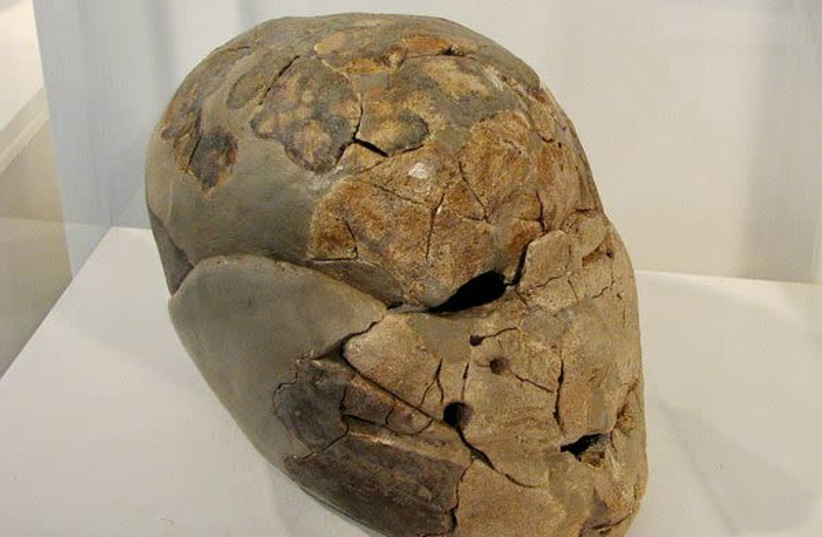 Evidence of most ancient cremation in Near East found in Israel
Evidence of most ancient cremation in Near East found in Israel
ROSSELLA TERCATIN
“Cremation could have allowed those ancient inhabitants of the site to have more space for the living, instead of devoting it to the dead.”

Several millennia ago in the region of the Hula Valley, a young person, possibly a male leader of his community living amid the transition between a hunter-gathering lifestyle and an agricultural society, passed away. The person’s remains were uncovered 9,000 years later by a group of international and Israeli researchers working at the Neolithic site of Beisamoun.
They represent an extraordinary testimony to how people lived and cared for the dead in prehistoric Israel, as well as the most ancient discovery of intentional cremation in the Near East.
As explained in a paper published in the online journal PLOS ONE last week, the bones were found in a U-shaped pit about 80 cm. at its widest and 60 cm. deep. The body was probably placed in the pit with its legs flexed, resembling a seated position.
The discovery might lead to a new understanding of burial practices during the Neolithic period at this site and beyond, Israel Antiquities Authority archaeologist Dr. Hamoudi Khalaily, one of the authors of the study, told The Jerusalem Post.
“Since the early 1980s, researchers have been wondering why they were able to find many burials dating back to the Early Neolithic but not from the Pottery Neolithic, in spite of the fact that the site was still clearly in use,” he said. “If people lived there, they must have also died there. The choice to cremate the bodies might represent the answer to this mystery.”
In the Re-pottery Neolithic, a very common practice was to bury the dead under the floor of the houses where people lived, Khalaily said, adding that cremation could have presented several advantages for the community.
“Cremation could have allowed those ancient inhabitants of the site to have more space for the living instead of devoting it to the dead,” he said. “Moreover, since this was an area close to water sources, burning the bodies of those who passed away from diseases could have helped to avoid further contamination.”
The site is close to where Hula Lake used to be, an area where malaria and other diseases were very common before the major draining of the 1950s.
The pyre-pit was uncovered right outside the village, which could support those theories.
While the scientists could not determine the gender of the deceased, they identified a wound that was caused by a projectile point, indicating it was caused by another human. While the wound appeared to have completely healed by the time the victim died, they were able to extract a fragment embedded in the base of the left scapular spine.
In the pyre, besides material used for fuel, the researchers identified grasses and flowers that might have been employed as ornaments or for the purpose of creating a scent as the body burned. Wheat remains were also detected, a possible sign that foodstuff was placed inside the pit together with the corpse as a form of offering.
The unique characteristics of the burial might also be interpreted as a sign that the deceased represented an important person within a community, a leader or a member of a leader’s family, Khalaily said.
In the past, some plastered skulls were uncovered at the site, probably treated in this way with the purpose of creating “masks” using the remains of former rulers or priests to be presented to those who replaced them, the article said.
“The pyre-pit structure found at Beisamoun, together with the secondary cremains deposits, show a complex operational chain of funerary gesture with strong technical constraints and several steps of handling,” the researchers wrote.
Zawartość publikowanych artykułów i materiałów nie reprezentuje poglądów ani opinii Reunion’68,
ani też webmastera Blogu Reunion’68, chyba ze jest to wyraźnie zaznaczone.
Twoje uwagi, linki, własne artykuły lub wiadomości prześlij na adres:
webmaster@reunion68.com
